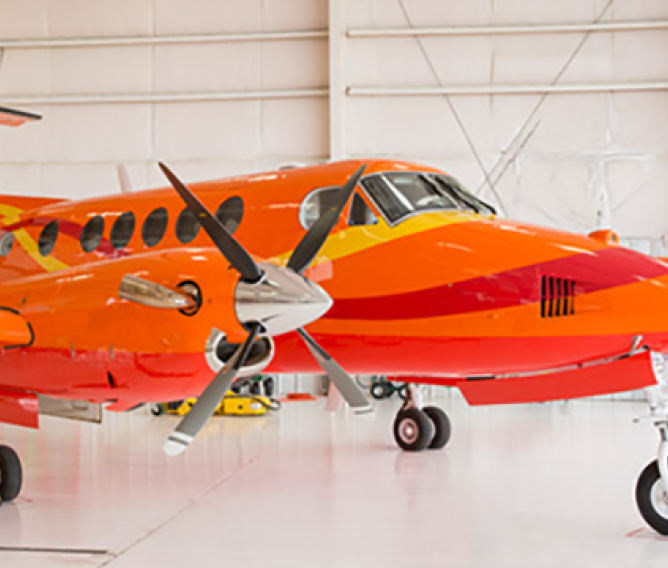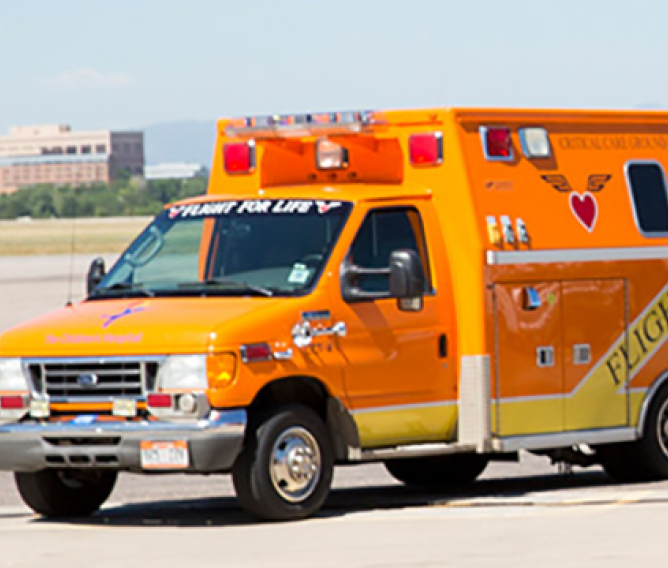
Our helicopters are flying critical care units, perfect for medical air transport in our mountain communities.
Our helicopter pilots have military experience, many have seen active duty. They have several thousand hours experience as pilot-in-command and have undergone extensive training to enable them to fly in the unique environment of the Rocky Mountains.
The pilot's chief responsibility is the safe operation of the aircraft. All decisions regarding "go or no go" are strictly the pilot's. All helicopter operations are under "visual flight rules" (VFR), so weather factors will significantly affect a pilot's decision.
Each helicopter is capable of carrying one adult patient and two care providers, in addition to the pilot. Because of space and weight limits, we don't carry family members aboard the helicopters.
The helicopters are based at:
- St. Anthony Hospital - Lifeguard One
- St. Anthony Summit Hospital - Lifeguard Two
- Penrose-St. Francis Hospital - Lifeguard Three
- St. Mary-Corwin Hospital - Lifeguard Four
- Mercy Hospital - Lifeguard Five
- St. Elizabeth Hospital - Lifeguard Six
All helicopters are in service twenty-four hours a day, seven days a week and have a service radius of approximately 150 from their bases. The helicopters are leased from Air Methods Corporation in Englewood, Colorado. Pilots and mechanics are employees of Air Methods Corp.

Flight for Life® contracts with Mayo Aviation for two dedicated Beachcraft King Air 200's and one King Air 200 GTX. This pressurized, twin turboprop aircraft is capable of instrument flight (IFR) at a speed of 265 nautical miles per hour (knots), and is used for flights of up to approximately 800 miles round trip distance. The pilots are proficient in multi-engine and instrument flight. Outfitted in a dedicated air medical configuration, the King Air is capable of transporting two patients. On most flights, one family member is also able to fly along.
The fixed-wing aircraft routinely transport patients from sending facilities in:
- Colorado
- Kansas
- Arizona
- New Mexico

In some cases, patients may need a critical care team, but not the speed of the helicopter. Flight for Life®'s critical care ambulances are custom fitted and staffed by a critical care team and an EMT.
Based at Centennial Airport, Terra One and Terra Six transport patients while maintaining the highest levels of care. Patients include cardiac patients receiving vasoactive, anticoagulant, or fibrinolytic infusions, mechanically ventilated patients, patients undergoing IABP therapy, or for any patient that needs continuous ICU level care en route.
The CCT ambulance based at Summit Hospital in Frisco, is in service when Lifeguard Two is grounded by weather or maintenance. This provides the mountain communities with around the clock access to critical care transport, regardless of weather conditions.
Ambulances located at St. Mary-Corwin Hospital provider interfacility ALS and BLS transport services in southern Colorado.
In certain circumstances, several transport resources may be needed to transport a patient to an appropriate destination. Weather conditions may prevent a helicopter from reaching the scene or referring facility, or a mass casualty incident may tax all other resources. In these situations, the flight crews will do whatever is appropriate to safely accomplish the transport.
The Flight for Life® Communication Center handles the dispatching and communications needs for all of the programs services. Located at CommonSpirit - Mountain Region Corporate in Centennial, the center is a full time dispatching, flight following, and coordination center.
When a request for transport is received, the communications specialist determines the most appropriate vehicle for the transport and activates the crew. For a scene flight, the specialist takes as much information as possible regarding the nature of the call, the location, local weather, and any details on patient condition. All of this is passed along to the crew. The crews may elect to alter the plan, choosing another vehicle if needed, for the sake of the transport. Using all the information gathered, communication specialists can determine GPS coordinates of the incident location.
For the helicopter, while in flight, the location and progress of the vehicle are tracked via radio communications. Whenever the helicopter is outside of radio range, messages are relayed via county sheriff's dispatchers. Contact must be made with the helicopter every ten minutes. No contact for thirty minutes results in an "aircraft overdue" response, triggering a formal process to locate the aircraft and determine if help is needed.
The center handles the coordination of other services that may be required. On some interfacility flights, the helicopter may have to land at the local airport, necessitating ground ambulance transport to and from the hospital.
On the flight to a receiving facility, the center facilitates the exchange of information between the flight crew and the hospital. This may be via direct radio/telephone link to an emergency department, or by relaying messages to the receiving unit by telephone.
For fixed-wing flights, the center will take the initial request and notify the flight crews, as well as Mayo Aviation, Flight for Life®'s fixed-wing operator. Mayo is responsible for contacting its pilots and filing of flight plans. However, the center still coordinates all transport of the crew to and from the airports.
Once airborne, the fixed-wing pilot will coordinate with the center regarding ETA's and relaying any needs of the medical crew. The center will keep the referring facility apprised on the progress of the flight, updating the ETA as needed.
For critical care ground (CCT) transports, the center will take the request from the referring facility and notify the CCT crew. For simultaneous requests, Communication Specialist will consult with the CCT crew to determine proper order of transports, or for the need to refer the request to another service.
Periodically, area facilities will experience surges in certain patient populations, taxing their abilities to take more patients. When this occurs, a facility will announce a "divert" for that patient area, e.g., ER divert, or ICU divert. The center will track and relay divert status so that patients will not be transported to facilities unable to accept them.


